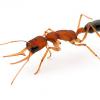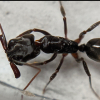I think this is a valid question, though in this hobby it tends to get one flamed into the ground.
I personally think it could be okay in some situations, BUT it's true there are a host of factors we don't always know about or understand.
For example, I remembered recent studies show that Monarch butterflies that are even held in captivity for a short but critical time (I think around the time of eclosing from chrysalis) lose their ability to migrate. That's not something that was known even a few years ago. So I get it, we shouldn't promote this thing in general or at least we should be seeking to research it further. I also get that this hobby does not want to get negative press and does not want to get into trouble with authorities.
THAT said, we humans routinely mess around with our environments, introducing non-native species from soil nematodes to ladybugs to all sorts of invasive plants to allowing pet cats to run around wreaking havoc, so it seems to me this is a perfectly valid topic for discussion. Even experts disagree when it comes to releasing, say, GMO mosquitoes (or even GMO crops - now there's something that impacts lots of stuff and we still don't understand it). It NEEDS discussion - if not in the hobby, then in general society. Because let's face it, humans are modifying the environment, knowingly or not.
Edited by OhNoNotAgain, February 20 2020 - 3:08 PM.
Formiculture Journals::
Veromessor pergandei, andrei; Novomessor cockerelli
Camponotus fragilis; also separate journal: Camponotus sansabeanus (inactive), vicinus, laevigatus/quercicola
Liometopum occidentale; Prenolepis imparis; Myrmecocystus mexicanus (inactive)
Pogonomyrmex subnitidus and californicus (inactive)
Tetramorium sp.
Termites: Zootermopsis angusticollis
Isopods: A. gestroi, granulatum, kluugi, maculatum, vulgare; C. murina; P. hoffmannseggi, P. haasi, P. ornatus; V. parvus
Spoods: Phidippus sp.




















